未選択
-
Into the Northern highlands: A journey worth taking
If you’ve ever dreamed of riding through misty mountains, stopping in colorful ethnic villages, and discovering Vietnam’s most raw and rugged landscapes, then heading north is your answer. The journey from Hanoi to Ha Giang is more than a transfer—it's the beginning of the most scenic motorbike experience in the country: the legendary Ha Giang Loop motorbike tour.
Getting There: How to Travel from Hanoi to Ha Giang
Your adventure begins in the bustling streets of Vietnam’s capital, Hanoi. From here, the route to Ha Giang is about 300 kilometers and takes roughly 6 to 8 hours by road. While there is no direct train route, you have several options for making the trip comfortably and affordably.
Many travelers take an overnight sleeper bus from Hanoi to Ha Giang, arriving early in the morning refreshed and ready to begin the loop. These buses depart daily from My Dinh or Gia Lam stations. Alternatively, if you prefer more comfort or are traveling in a group, private transfers or limousine vans are available. Riding a motorbike the entire way is also possible, but only recommended for experienced riders, as the route can be long and tiring.

Once you arrive, ha giang city hostel is the perfect place to rest, rent a motorbike, and prepare for the road ahead.
Why Ha Giang City Hostel is the Best Base for Your Loop Tour
Before tackling winding mountain passes and exploring remote villages, you need a solid base to prepare. Ha giang city hostel has become a favorite among travelers for its friendly service, reliable motorbike rentals, and in-depth local knowledge.
The hostel offers everything you need for a smooth Ha Giang Loop motorbike tour: from safety gear and easy-to-handle semi-automatic bikes to detailed maps and suggested itineraries. Staff members are local and know the loop intimately. They’ll guide you on the best routes, recommend hidden gems, and even help you join a group tour if you’d rather not ride solo.
You can also leave any extra luggage at the hostel, making your motorbike lighter and your journey more comfortable.

What Awaits You on the Ha Giang Loop Motorbike Tour
The Ha Giang Loop motorbike tour is a circular route that typically takes 3 to 5 days. It passes through jaw-dropping landscapes and traditional villages in towns like Quan Ba, Yen Minh, Dong Van, Meo Vac, and Du Gia. You’ll experience everything from steep mountain passes like Ma Pi Leng to quiet valleys dotted with terraced rice fields.
What sets the loop apart from other destinations in Vietnam is its untouched beauty and cultural authenticity. Along the way, you'll meet various ethnic minorities such as the Hmong, Tay, and Dao people. Their distinct customs, dress, and architecture make every stop unique and enriching.
Riding through cloud-covered mountain roads and stopping in small, local markets where tourists are still a novelty gives the loop a genuine feel you won’t find elsewhere.
Tips for a Safe and Enjoyable Loop Experience
While incredibly beautiful, the loop also comes with challenges. Roads can be narrow and winding, and weather conditions can change quickly. That’s why preparation is key.
Always wear a helmet and test your motorbike before departure. Bring layers of clothing to adapt to changing altitudes and temperatures. A waterproof jacket is a must during the rainy season, and gloves will help you grip your bike on long rides.
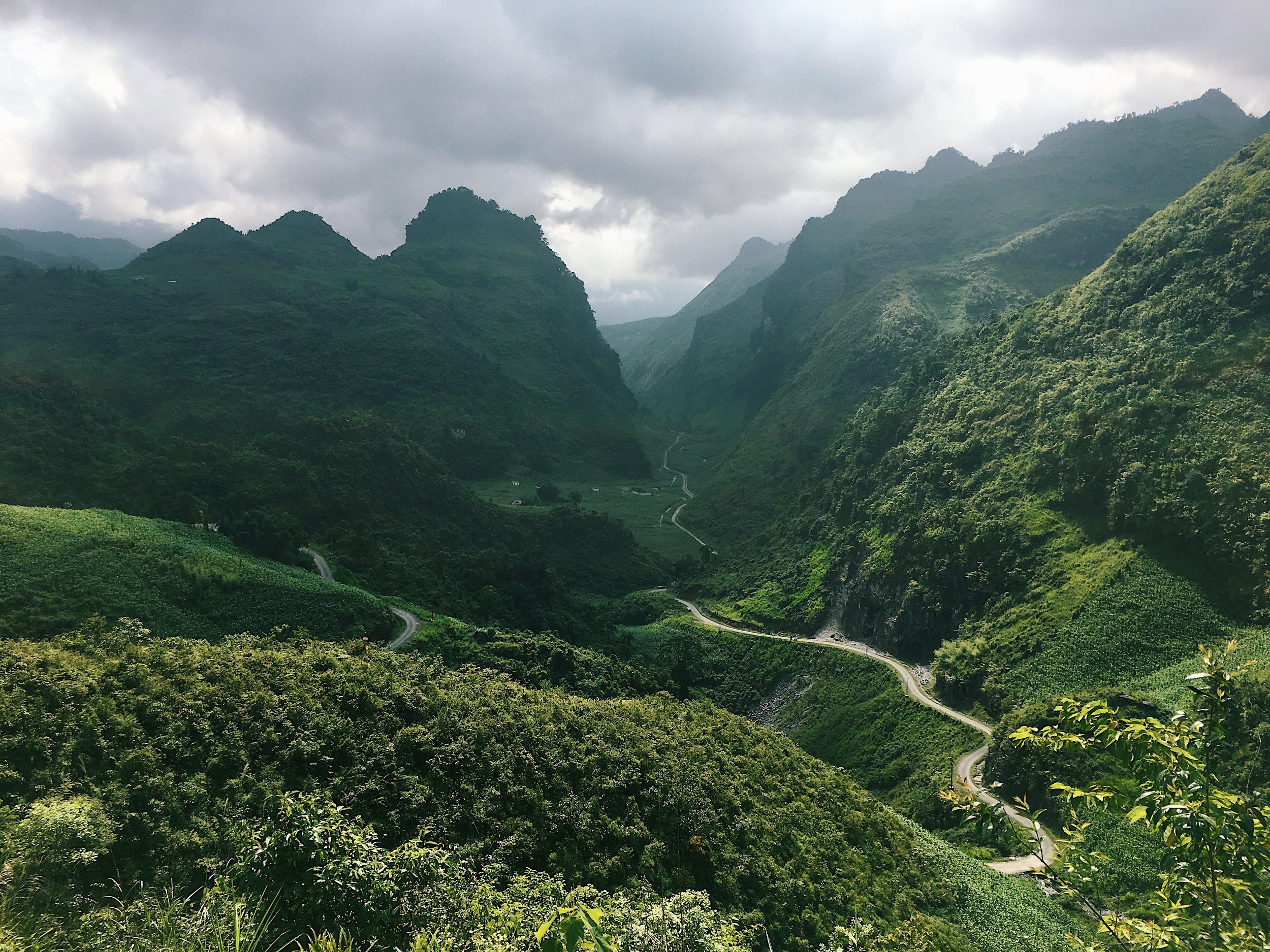
Pack lightly, but don’t forget essentials like a power bank, offline maps, sunglasses, and some snacks for the road. Fuel stations are spread out, so fill up whenever you get the chance. Most importantly, never ride at night, as roads are dark and animals often wander onto them.
Staying in Homestays Along the Route
One of the most memorable aspects of the loop is staying in local homestays. These family-run accommodations offer more than just a bed—they give you a glimpse into daily life in northern Vietnam. Hosts often cook dinner, share stories, and invite guests to join in traditional customs.
Be respectful by dressing modestly, removing shoes indoors, and learning a few basic Vietnamese phrases or greetings in the local dialect. These small gestures go a long way in showing appreciation for your hosts.
The Perfect Ending to Your Adventure
After several days on the road, you’ll return to Ha Giang City with incredible memories and perhaps a few sore muscles. Thankfully, ha giang city hostel is there to welcome you back with hot showers, cold drinks, and a chance to share stories with fellow riders. Many travelers spend an extra night here before heading back to Hanoi or continuing to explore the northern regions of Vietnam.

Whether you want to rest or plan your next trip, the hostel is a perfect space to reflect on your unforgettable journey.
A Ride Through Vietnam’s Best-Kept Secret
The journey from Hanoi to Ha Giang sets the stage for one of the most epic experiences you can have in Vietnam. With the help of ha giang city hostel and a spirit of adventure, the Ha Giang Loop motorbike tour will leave you with lasting memories of stunning landscapes, warm hospitality, and the thrill of the open road.
PR -
Exploring Northern Vietnam's most breathtaking journey
Northern Vietnam is a region filled with staggering beauty and cultural richness, and few experiences capture this better than traveling from Sapa to Ha Giang, then embarking on the legendary Ha Giang Loop motorbike tour. This route connects two of the most scenic destinations in the country, offering travelers a raw, unforgettable adventure through winding roads and untouched landscapes.
Making the Journey from Sapa to Ha Giang
Before your motorbike adventure can begin, many travelers wonder how to get from Sapa to Ha Giang. These two northern gems are roughly 230 kilometers apart, and while the distance may seem manageable, the mountainous roads require time and planning.
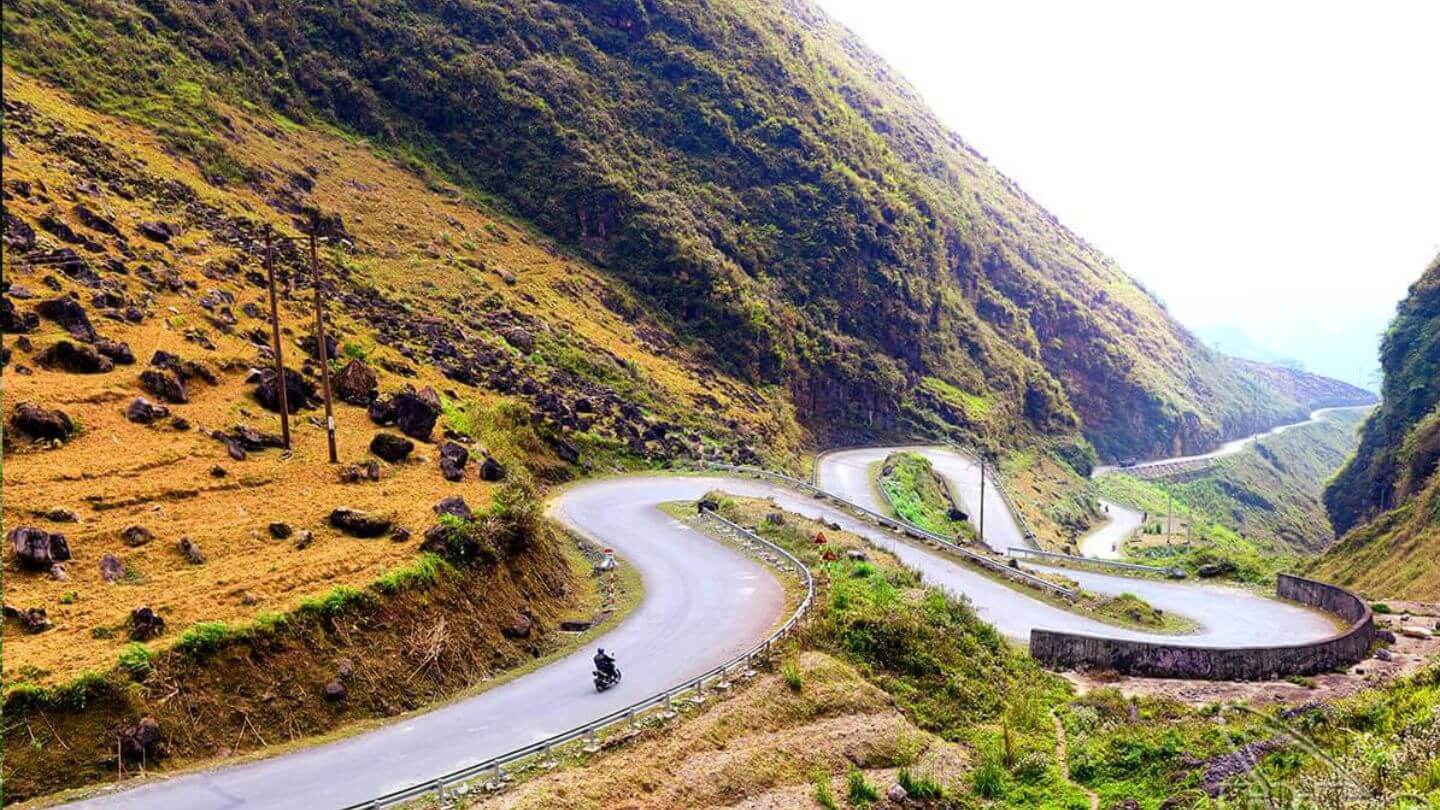
You can take a direct bus or hire a private transfer from Sapa to Ha Giang City. Buses typically take 6–7 hours and are the most budget-friendly option, while private vans offer more flexibility and comfort. An increasingly popular choice is to travel to Ha Giang via Lao Cai or Bac Ha, enjoying scenic stops along the way.
Regardless of how you choose to travel, your final destination before starting the loop is Ha Giang City—a charming town nestled in the mountains and the official gateway to the loop.
Where to Begin: Ha Giang City Hostel as Your Launch Point
Once you arrive in Ha Giang, you’ll need a place to rest and prepare before beginning your ride. That’s where ha giang city hostel comes in. This friendly, well-equipped hostel is designed for travelers embarking on the Ha Giang Loop motorbike tour. With bike rentals, protective gear, local route advice, and even group tour options, the hostel ensures you’re ready for the days ahead.
The staff can also provide updates on road conditions, weather, and homestay bookings along the loop. Plus, the cozy communal space is perfect for meeting other adventurers and planning your ride together.
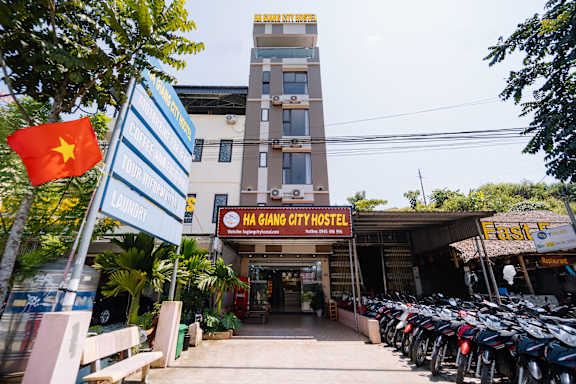
The Magic of the Ha Giang Loop Motorbike Tour
Now that you’ve arrived and prepped, it’s time to dive into the unforgettable Ha Giang Loop motorbike tour. Spanning 350–400 kilometers, this loop takes you through some of the most stunning scenery in Vietnam, including Quan Ba, Yen Minh, Dong Van, Meo Vac, and Du Gia.
The ride itself is a thrilling mix of winding mountain roads, river valleys, and jaw-dropping viewpoints. Highlights include Quan Ba Heaven Gate, the zigzagging Tham Ma Pass, and the awe-inspiring Ma Pi Leng Pass, which offers views down into the Nho Que River gorge.
But it’s not just about the landscapes—the loop is also an incredible cultural experience. You’ll pass through villages of ethnic groups like the Hmong, Dao, and Tay, where traditional lifestyles and customs are still deeply rooted in daily life.
Tips for Riding the Loop Safely and Smoothly
Riding through Ha Giang’s rugged terrain is thrilling but requires preparation and awareness. The roads can be narrow, steep, and occasionally slippery, especially during or after rain. Always wear a helmet, test your motorbike before departure, and never ride after dark.
Bring layers of clothing, as temperatures can vary between valleys and high-altitude areas. Rain gear is essential during the wet season (June to August), and in winter (December to February), it can get surprisingly cold.
Fuel stations are limited in remote areas, so top up your tank regularly. Offline maps and a power bank will also help if your phone signal disappears.
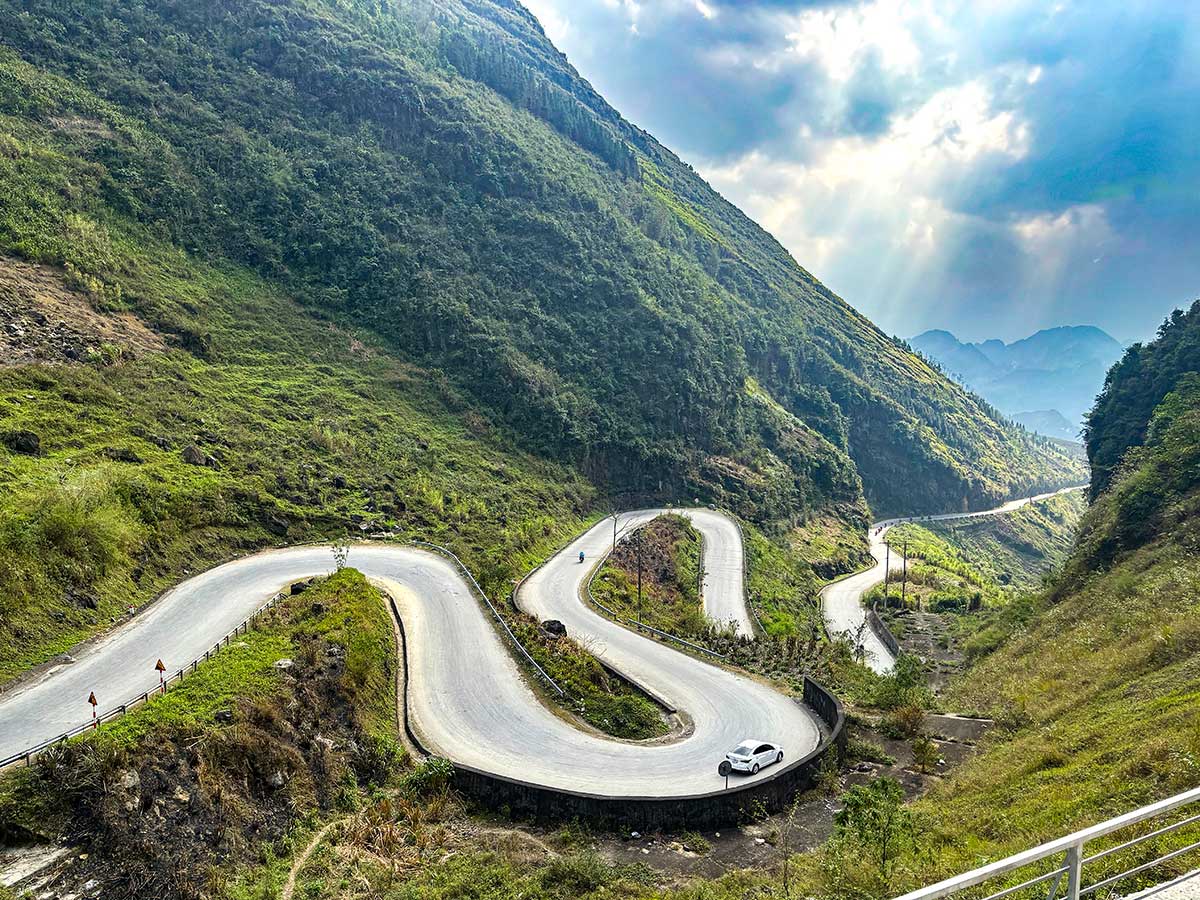
Cultural Etiquette and Homestay Experiences
One of the most rewarding parts of the Ha Giang Loop motorbike tour is staying in local homestays. These family-run lodgings provide meals, stories, and a warm look into rural Vietnamese life. Always greet your hosts with respect, remove shoes before entering homes, and ask before taking photographs of people.
Markets in towns like Dong Van and Meo Vac also offer great chances to observe (and participate in) local life. These markets are colorful, chaotic, and completely authentic—don’t miss them if your route aligns with market days.
Returning to Ha Giang and Beyond
Once you complete the loop, returning to ha giang city hostel gives you a chance to relax, reflect, and reconnect. Many travelers spend a night here after the tour to recover, swap stories, and plan their next adventure. Some even return their rented bikes here before continuing on to Hanoi or other parts of Vietnam.
If you started your journey in Sapa, you may choose to head back there, but many continue south toward Hanoi or onward to destinations like Cao Bang or Ba Be Lake.

Conclusion: The Ultimate Northern Vietnam Adventure
From the scenic route Sapa to Ha Giang, to the legendary experience of the Ha Giang Loop motorbike tour, this region offers an unmatched combination of adventure, culture, and beauty. With the help of ha giang city hostel as your base, you can be well-equipped, informed, and ready to make the most of every moment on the road. So pack your bags, charge your camera, and prepare to ride through one of Vietnam’s last true frontiers.
-
Ready for the ride of a lifetime in Northern Vietnam?
Northern Vietnam is a land of towering limestone peaks, misty mountain passes, and vibrant ethnic cultures. One of the most exhilarating ways to explore this region is by embarking on a Ha Giang Loop motorbike tour. This journey takes you through some of the most remote and scenic parts of the country. Whether you’re a seasoned rider or a first-timer, proper planning can make all the difference. In this blog, we’ll walk you through what the tour entails, what to pack for Ha Giang Loop, and why staying at ha giang city hostel is the perfect way to start your journey.
Why the Ha Giang Loop Is Vietnam’s Most Epic Motorbike Adventure
The Ha Giang Loop is a circular route that begins and ends in Ha Giang City, winding through mountain towns such as Quan Ba, Yen Minh, Dong Van, Meo Vac, and Du Gia. Each section of the loop reveals a different side of northern Vietnam, from dramatic cliffs and rice terraces to colorful minority markets.
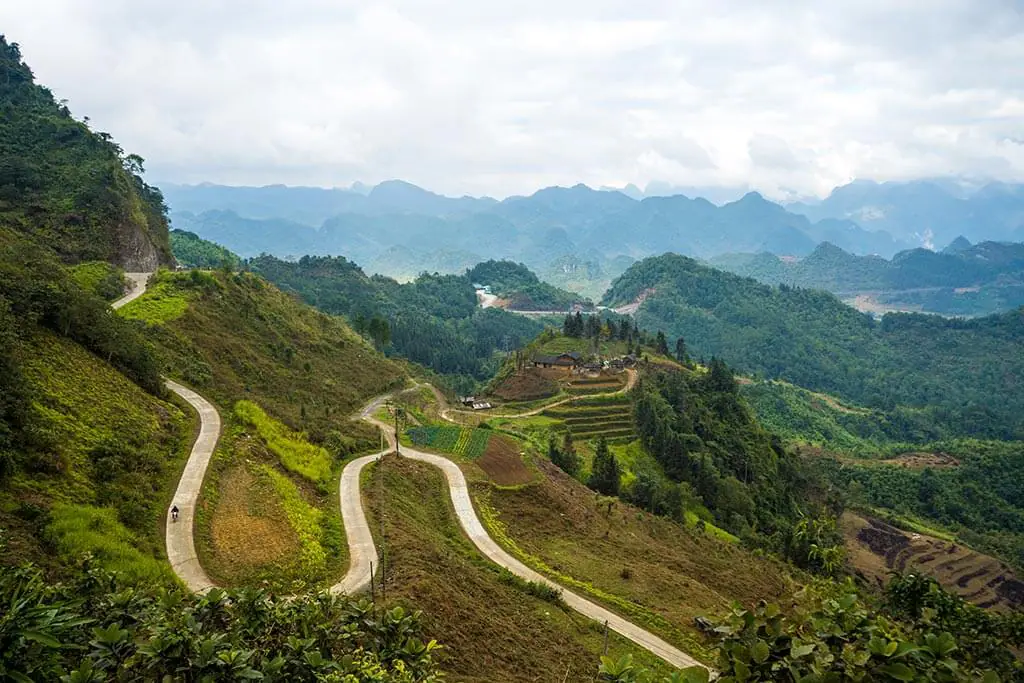
A Ha Giang Loop motorbike tour is more than just a scenic ride—it’s a cultural immersion. Riders encounter ethnic Hmong villages, rustic stilt houses, and local homestays where traditional food and warm hospitality await. The feeling of riding through clouds on Ma Pi Leng Pass or stopping at a tiny roadside café surrounded by mountains is something you’ll never forget.
Choosing the Right Base: Why Stay at Ha Giang City Hostel
Your adventure begins in Ha Giang City, where preparation is key. That’s why ha giang city hostel is a favorite among Loop riders. This hostel isn’t just a place to sleep—it’s a trusted starting point for travelers.
Offering motorbike rentals, helmets, protective gear, and route guidance, the hostel ensures that you’re fully equipped for the road ahead. The staff are locals who understand the terrain and can recommend stops, weather tips, and safety advice. Plus, the welcoming environment makes it easy to meet other travelers who might join your tour.

Packing Smart: What to Pack for Ha Giang Loop
Before you rev your engine and hit the road, make sure you know what to pack for Ha Giang Loop. The weather in Ha Giang can be unpredictable, and you’ll be far from shops, so it’s important to be well-prepared.
Start with appropriate clothing. Layers are essential—light shirts for daytime, a windbreaker or rain jacket for cooler or wet conditions, and thermal wear if you're riding in winter. The temperature can vary dramatically depending on altitude and time of day.
You’ll also need a sturdy pair of shoes or boots for walking around villages and exploring markets. Sunglasses, sunscreen, and a face mask or scarf are helpful to protect against sun, wind, and dust on the road.
Other essentials include a power bank, a flashlight or headlamp, a reusable water bottle, basic toiletries, and any medications you need. Don’t forget a printed or offline map of the loop, as phone signals can be weak in remote areas.
Lastly, pack cash. ATMs are limited on the loop, and many homestays or roadside shops don’t accept cards.

What to Expect on the Road: Scenic Views and Local Encounters
The Ha Giang Loop motorbike tour takes about 3 to 5 days, depending on your pace and the number of stops. Roads range from smooth tarmac to rough gravel paths, so ride carefully, especially on mountain passes like Tham Ma and Ma Pi Leng.
You’ll pass through valleys surrounded by rice paddies, stop at viewpoints high above the clouds, and have opportunities to explore local markets where different ethnic groups gather weekly. At night, homestays offer hearty meals and a chance to connect with locals and other travelers.
Expect a mix of independence and spontaneity—many riders adjust their plans along the way after discovering hidden villages or breathtaking detours.
Staying Safe and Respectful on the Loop
Safety is crucial, especially in such a remote region. Wear a helmet at all times, and test your motorbike before starting the loop. Don’t ride after dark, as roads can be unlit and treacherous.
Respect local customs and traditions. Dress modestly, ask before taking photos of people, and be polite when interacting in markets or villages. Learning a few words in Vietnamese or Hmong can go a long way in showing respect and earning smiles.

Ending the Loop: Rest, Recover and Reflect
After days of riding and exploring, returning to ha giang city hostel feels like coming home. Here, you can rest up, share stories with fellow adventurers, and reflect on an experience that likely changed your view of travel in Vietnam.
Many travelers choose to spend an extra night or two at the hostel to unwind, do laundry, and prepare for the journey back to Hanoi or beyond.
Your Motorbike Adventure Starts Here
Whether you’re drawn by the allure of the mountains, the culture of Vietnam’s ethnic groups, or simply the thrill of the ride, the Ha Giang Loop motorbike tour delivers on every front. With the right preparation and a clear idea of what to pack for Ha Giang Loop, you’re set for an adventure of a lifetime. Base yourself at ha giang city hostel for expert advice, reliable rentals, and warm community vibes—then hit the road and let northern Vietnam take your breath away.
-
Chasing horizons in Northern Vietnam
For those seeking breathtaking mountain scenery, winding roads, and deep cultural immersion, the Ha Giang Loop motorbike tour offers one of the most unforgettable journeys in Vietnam. This rugged route through the far north of the country is not only a visual feast but also a true test of adventure spirit. If you're planning to explore the Ha Giang Loop, this guide covers everything you need to know—from preparation to highlights, weather tips, and where to stay.
Starting Point – Why Ha Giang City Is the Gateway to the Loop
Your journey on the Ha Giang Loop begins in Ha Giang City, a quiet town that serves as the jumping-off point for most riders. It’s here that travelers rent motorbikes, gather route information, and rest up before hitting the open road.
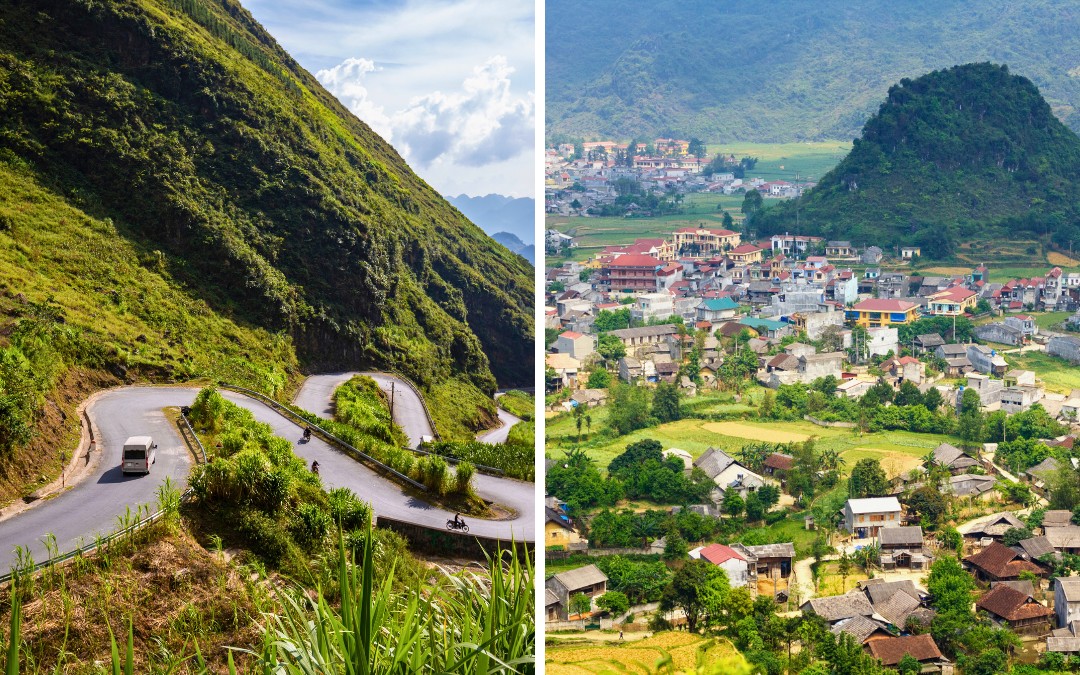
One of the most convenient places to begin your journey is ha giang city hostel, which provides not only cozy accommodation but also bike rentals, safety gear, and briefings on the loop. With a friendly atmosphere and knowledgeable staff, this hostel is the perfect place to meet fellow adventurers and prepare for the ride ahead.
What to Expect on the Ha Giang Loop Motorbike Tour
The Ha Giang Loop motorbike tour typically spans 3 to 5 days, depending on how many stops you make and your pace. The full loop covers about 350 kilometers and takes you through stunning towns such as Quan Ba, Yen Minh, Dong Van, Meo Vac, and Du Gia.
Along the way, expect to encounter dramatic limestone mountains, terraced rice fields, deep valleys, and isolated ethnic villages. You’ll ride past famous viewpoints like Heaven’s Gate, the majestic Ma Pi Leng Pass, and the winding Tham Ma Pass. Each twist and turn reveals another postcard-perfect scene, making the entire route feel like a live travel documentary.
Most travelers prefer to ride semi-automatic or manual bikes for better control on the steep and often winding mountain roads. If you’re not confident riding solo, many local guides offer guided tours with support vehicles, meals, and accommodation included.

Understanding the Weather on the Ha Giang Loop
One of the most common questions among travelers is about the weather Ha Giang Loop conditions. Since the route stretches across mountainous terrain, the weather can vary significantly from one area to another—and even throughout the day.
The best time to embark on a Ha Giang Loop motorbike tour is during the dry seasons, from March to May and September to November. These months offer clear skies, moderate temperatures, and minimal rainfall, making them ideal for riding and sightseeing.
Rainy season, especially from June to August, can make the roads slippery and foggy, reducing visibility. Meanwhile, winter months from December to February can be cold, with mist and even frost in higher altitudes. Always check weather Ha Giang Loop forecasts before starting your journey and be prepared with appropriate clothing layers and rain gear.
Cultural Encounters – Meet the Ethnic Communities of Ha Giang
One of the highlights of the Ha Giang Loop motorbike tour is the chance to engage with the region’s diverse ethnic groups. The area is home to more than 20 ethnic minorities, including the Hmong, Tay, Dao, and Lo Lo people.
Markets such as Dong Van Sunday Market or Meo Vac Market are perfect for witnessing local life in full color. You’ll see traditional clothing, handmade crafts, and livestock trading—all essential parts of the community’s cultural rhythm. Many homestays also offer the opportunity to enjoy local meals, share stories, and learn about customs passed down for generations.
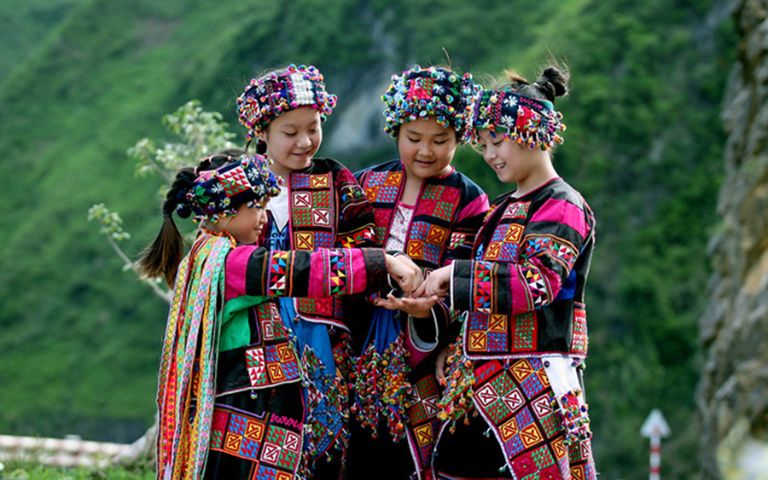
Where to Stay – Comfort and Convenience at Ha Giang City Hostel
After long hours navigating mountain passes and rural trails, having a reliable place to rest is essential. Ha giang city hostel stands out for its mix of comfort, local hospitality, and services tailored for Loop riders.
Besides beds and meals, the hostel provides loop briefings, weather updates, and helps arrange motorbike rentals or repairs if needed. Whether you’re traveling solo or in a group, the communal atmosphere makes it easy to swap stories with other travelers and get tips on hidden gems to visit.
You can also book a night at the hostel before and after your loop ride to recharge, repack, and get cleaned up after days on the road.
Tips for a Safe and Enjoyable Ride
Before you hit the road, there are a few things to keep in mind to make your Ha Giang Loop motorbike tour smooth and safe. Always wear a helmet and protective gear, even on sunny days. Make sure your motorbike is in good condition and test the brakes and lights before setting off.
Download offline maps or carry a paper map, as phone signals can be weak in remote areas. Carry enough cash for fuel, food, and accommodations since ATMs are rare along the loop. Lastly, respect local cultures, dress modestly, and always ask for permission before taking photos of people.
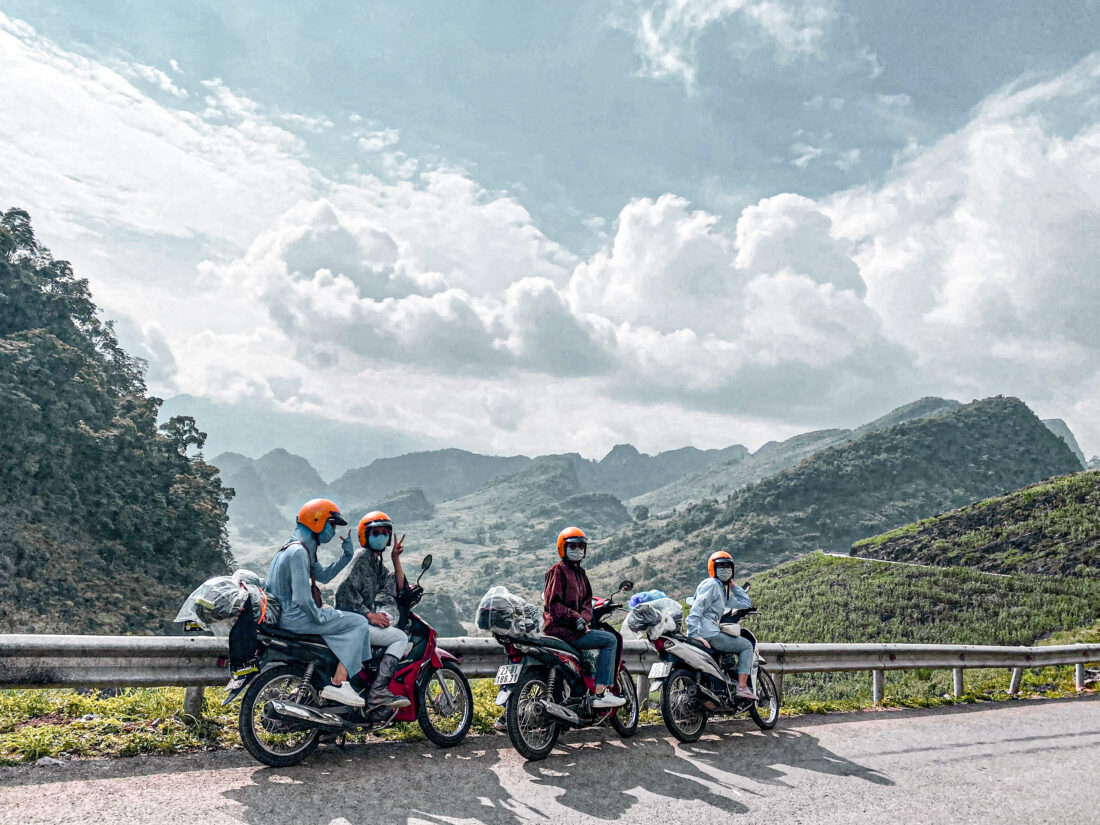
Conclusion – Your Adventure Awaits on the Ha Giang Loop
Whether you’re chasing panoramic views, connecting with local culture, or simply craving the thrill of the open road, the Ha Giang Loop motorbike tour offers all of that and more. With proper preparation, awareness of the weather Ha Giang Loop, and a reliable base like ha giang city hostel, your journey will be both safe and unforgettable. Pack your gear, fuel your curiosity, and get ready to explore one of Vietnam’s most spectacular adventures.
-
Gian hàng STEM – Không gian sáng tạo cho học sinh khám phá khoa học
Trong thời đại đổi mới giáo dục, mô hình học tập theo định hướng STEM (Science – Technology – Engineering – Mathematics) đang ngày càng được các trường học ứng dụng rộng rãi. Ngoài các giờ học lý thuyết, các buổi ngoại khóa và ngày hội khoa học là cơ hội tuyệt vời để học sinh được trải nghiệm thực tế. Trong đó, gian hàng STEM chính là điểm nhấn đặc biệt, giúp học sinh không chỉ vui chơi mà còn rèn luyện kỹ năng tư duy, sáng tạo và làm việc nhóm hiệu quả.
Gian hàng STEM là gì?
Gian hàng STEM là một không gian được thiết kế nhằm giới thiệu, trình bày hoặc tổ chức các hoạt động thực hành liên quan đến các lĩnh vực khoa học, công nghệ, kỹ thuật và toán học. Mỗi gian hàng thường xoay quanh một chủ đề cụ thể, có thể là trò chơi, thí nghiệm, mô hình ứng dụng, sáng chế nhỏ hay sản phẩm sáng tạo do học sinh tự thực hiện. Đây là nơi học sinh được tự tay làm, tự quan sát và rút ra kết luận – đúng tinh thần “học đi đôi với hành”.
Vai trò của gian hàng STEM trong trường học
-
Khơi gợi đam mê khoa học: Thông qua các mô hình trực quan và hoạt động tương tác, học sinh sẽ được tiếp cận kiến thức khoa học một cách gần gũi, thú vị, từ đó hình thành sự hứng thú tự nhiên với các môn học khô khan như Toán, Lý, Hóa.
-
Phát triển kỹ năng mềm: Làm việc nhóm, tư duy giải quyết vấn đề, khả năng trình bày – thuyết trình và sáng tạo là những kỹ năng học sinh có thể rèn luyện thông qua việc tham gia và điều hành gian hàng STEM.
-
Gắn kết phụ huynh – nhà trường: Gian hàng STEM tại các ngày hội khoa học còn là dịp để phụ huynh cùng tham gia, chứng kiến sự trưởng thành và năng lực tư duy của con em mình.
-
Thúc đẩy giáo dục toàn diện: Thay vì chỉ học lý thuyết, các em học sinh được “va chạm” thực tế, từ đó phát triển đồng đều cả nhận thức, cảm xúc và kỹ năng xã hội.
Ý tưởng thiết kế gian hàng STEM hấp dẫn
Việc tổ chức một gian hàng STEM thành công phụ thuộc vào việc chọn chủ đề phù hợp, hấp dẫn và khả thi với độ tuổi học sinh. Dưới đây là một số ý tưởng được nhiều trường học lựa chọn:
-
Gian hàng thí nghiệm hóa học vui: Cho học sinh thực hiện các phản ứng đơn giản như tạo mây, làm núi lửa mini, chất đổi màu, tạo bong bóng khí CO2… an toàn nhưng đầy bất ngờ.
-
Gian hàng mô hình kỹ thuật: Trưng bày các sản phẩm do học sinh tự thiết kế như mô hình cầu vượt, cánh quạt chạy bằng pin mặt trời, ô tô chạy bằng dây chun, cần cẩu mini...
-
Gian hàng lập trình robot: Trải nghiệm điều khiển robot line-following, robot tránh vật cản, lập trình đơn giản với Arduino hoặc Scratch.
-
Gian hàng toán học vui: Các trò chơi toán học thông minh như giải mật mã, xếp hình logic, tìm quy luật số học, Sudoku, ảo thuật toán học...
-
Gian hàng tái chế – khoa học xanh: Sáng tạo sản phẩm thân thiện môi trường từ đồ tái chế như làm pin từ khoai tây, chế tạo máy lọc nước đơn giản, đèn từ nước muối...
-
Gian hàng khám phá thiên nhiên: Trưng bày mô hình hệ mặt trời, thí nghiệm tạo mưa, quan sát phản ứng của đất và nước, phân tích sự sống trong đất...
Cách bố trí gian hàng STEM hiệu quả
Để thu hút người tham quan, đặc biệt là học sinh nhỏ tuổi, gian hàng STEM cần được thiết kế sinh động, an toàn và dễ tiếp cận:
-
Bố trí mở, linh hoạt: Cho phép học sinh và phụ huynh dễ dàng tiếp cận, quan sát và tương tác. Ưu tiên các bàn thấp, dễ thao tác cho trẻ nhỏ.
-
Biển tên và mô tả rõ ràng: Mỗi gian hàng nên có bảng tên, mô tả ngắn gọn về chủ đề và hướng dẫn tương tác để người tham quan dễ hiểu và tham gia.
-
Trang trí sinh động: Sử dụng màu sắc nổi bật, hình ảnh trực quan, mô hình 3D, poster minh họa để tạo sự thu hút.
-
Khu vực trưng bày và khu vực thực hành: Nếu không gian cho phép, nên phân chia riêng biệt khu vực trưng bày sản phẩm và khu vực tương tác để tránh lộn xộn.
Những lưu ý khi tổ chức gian hàng STEM
-
Tính an toàn là ưu tiên hàng đầu: Tránh sử dụng hóa chất độc hại, thiết bị sắc nhọn hoặc các mô hình có nguy cơ cháy nổ. Tất cả thí nghiệm đều phải được giáo viên kiểm duyệt kỹ.
-
Phù hợp độ tuổi: Các hoạt động nên được điều chỉnh để học sinh có thể dễ dàng thực hiện, không quá khó nhưng vẫn đủ thử thách.
-
Khuyến khích sự tham gia của học sinh: Học sinh không chỉ là người trải nghiệm mà còn có thể trở thành người hướng dẫn, giới thiệu hoạt động – giúp nâng cao sự tự tin và kỹ năng giao tiếp.
-
Chuẩn bị kỹ lưỡng: Mọi vật dụng, mô hình, bảng hiệu, dụng cụ cần được chuẩn bị trước từ 1 – 2 tuần, và được kiểm tra kỹ lưỡng trước ngày hội.
Kết luận
Gian hàng STEM không chỉ là không gian vui chơi, mà còn là nơi nuôi dưỡng đam mê khoa học, rèn luyện tư duy và kỹ năng cần thiết cho thế hệ trẻ. Với sự chuẩn bị kỹ càng, sáng tạo và gắn kết chặt chẽ giữa nhà trường, giáo viên và học sinh, các gian hàng STEM chắc chắn sẽ mang lại một ngày hội khoa học đầy cảm hứng và bổ ích. Nếu bạn đang tìm kiếm một đơn vị hỗ trợ thiết kế – thi công gian hàng STEM chuyên nghiệp, sáng tạo, có thể tham khảo https://avicom.vn/ – đơn vị giàu kinh nghiệm trong lĩnh vực thiết kế gian hàng triển lãm giáo dục.
-
